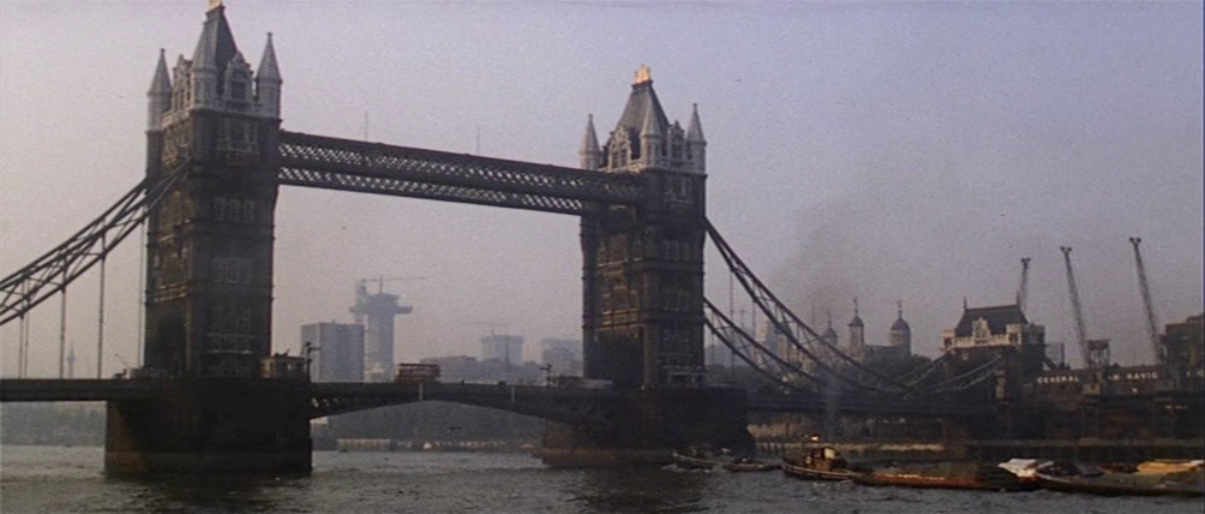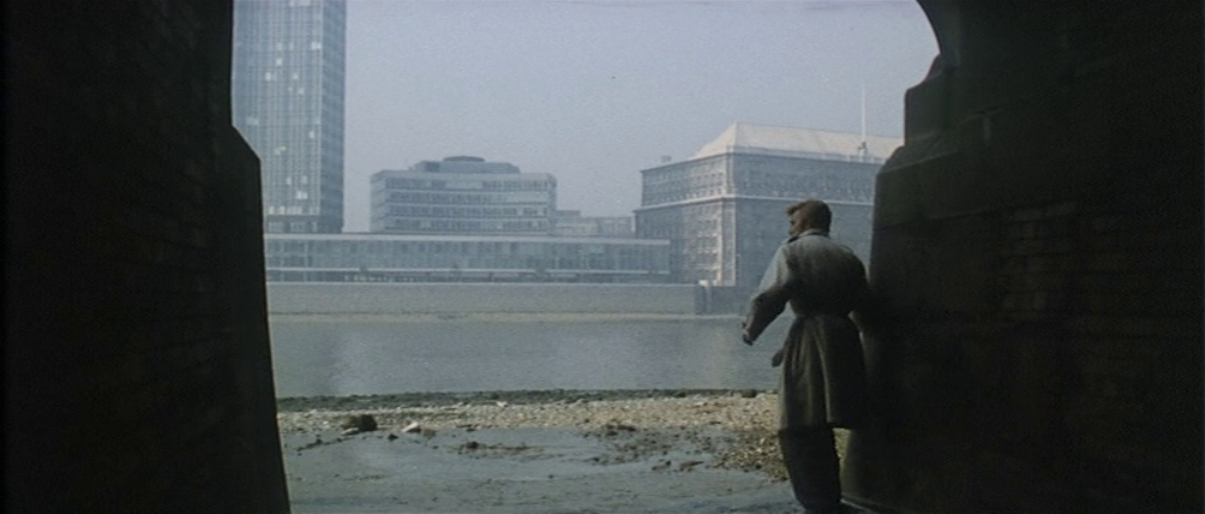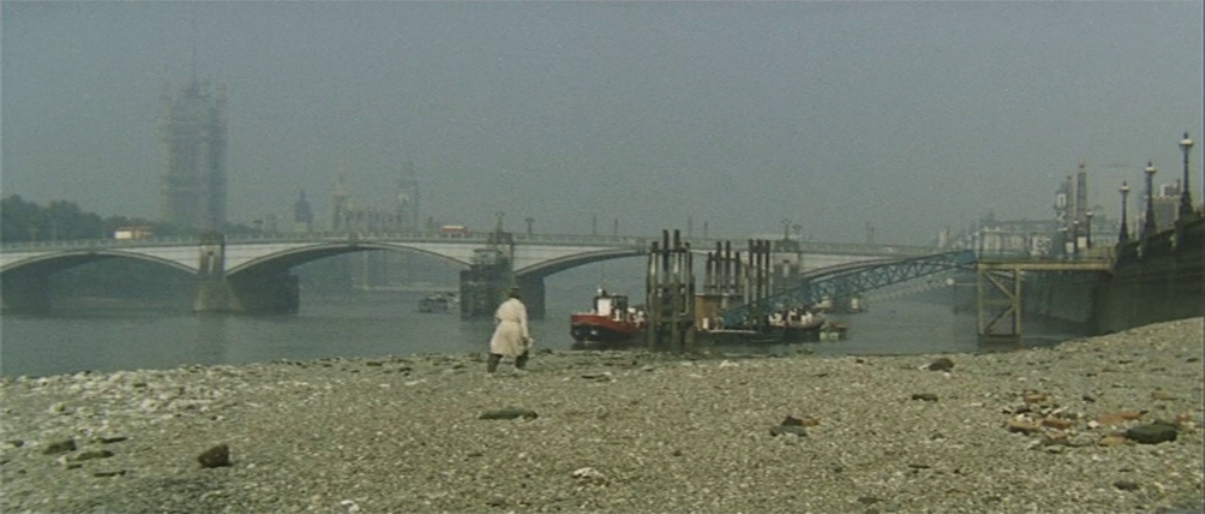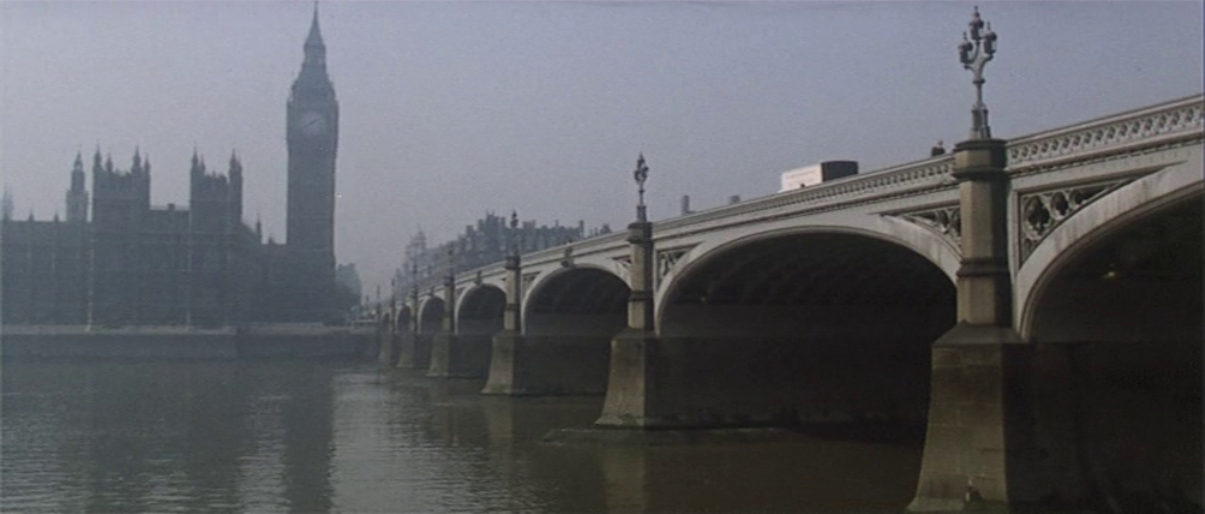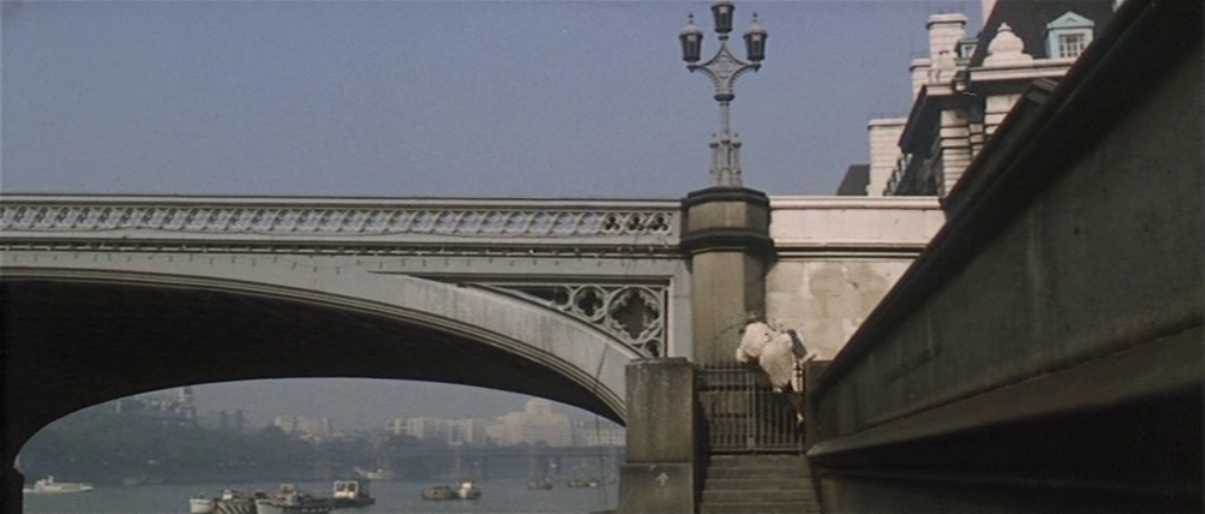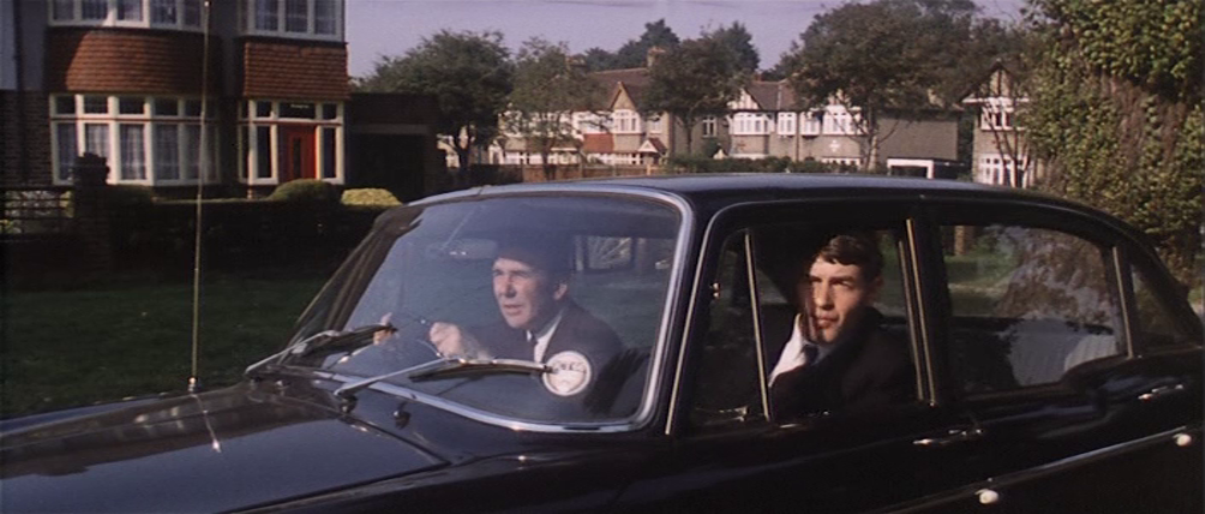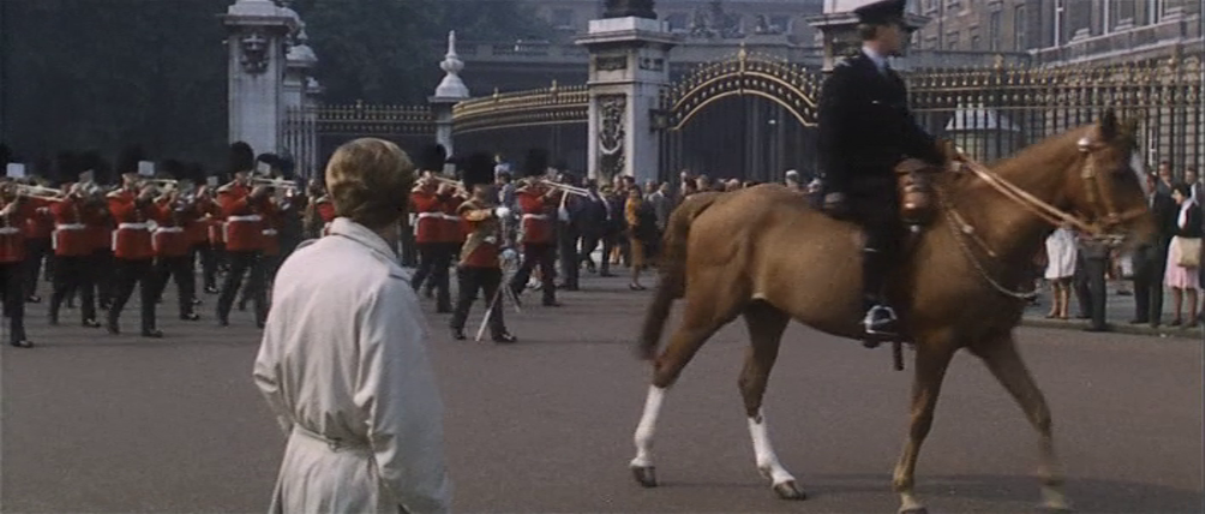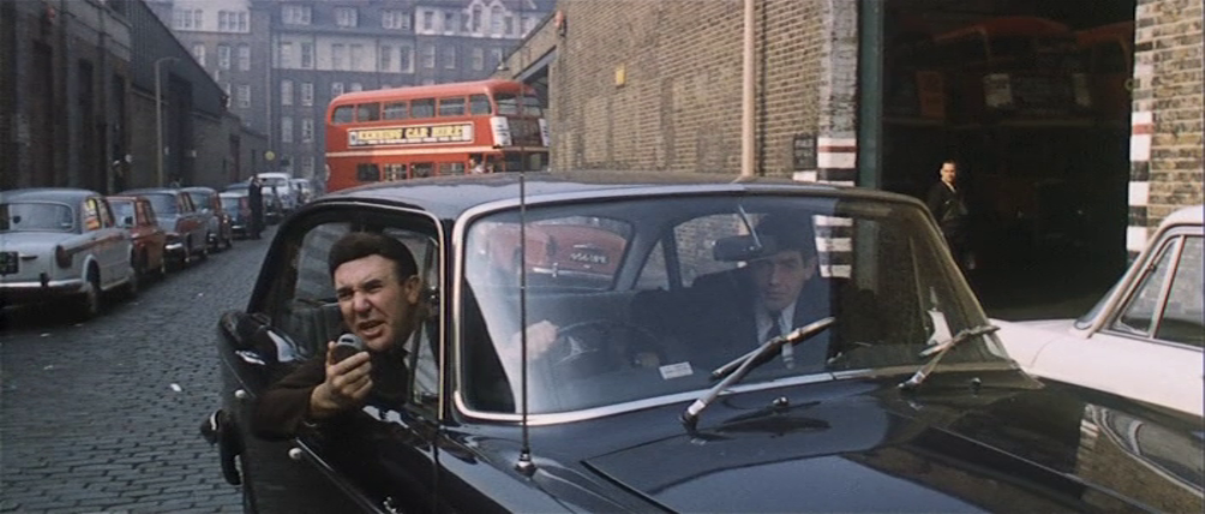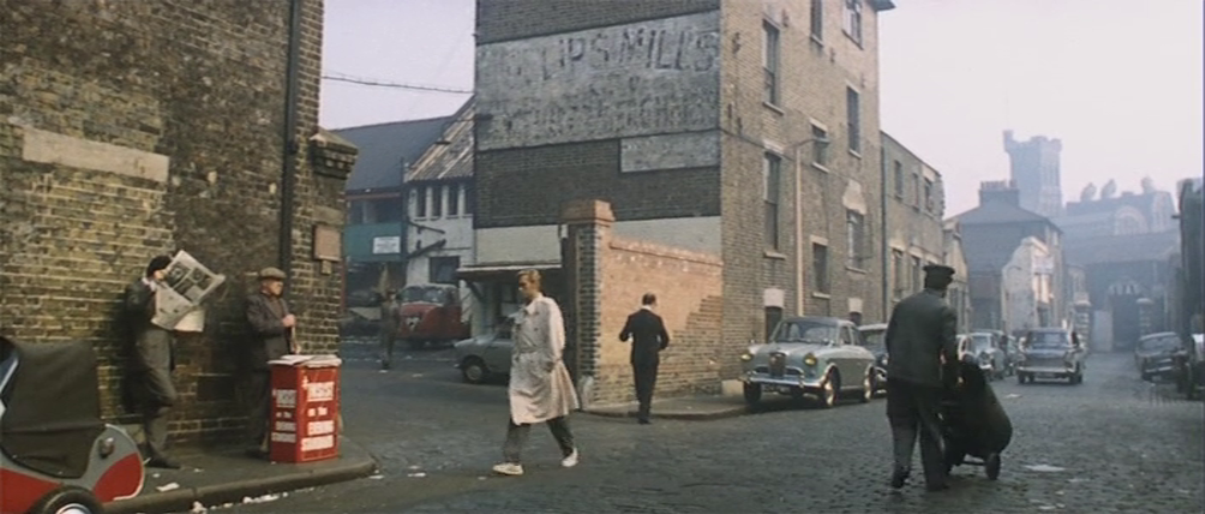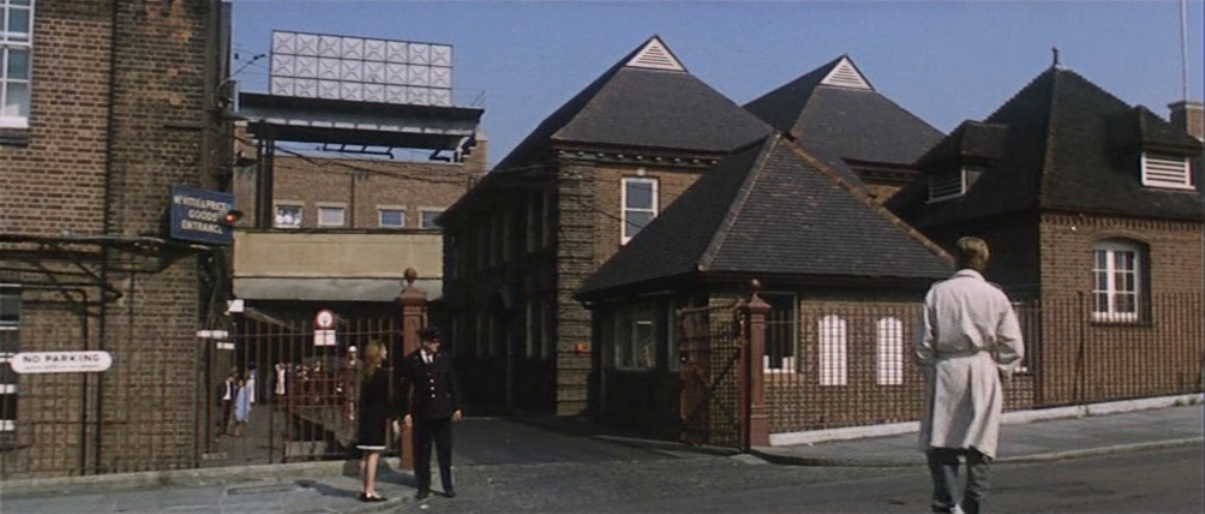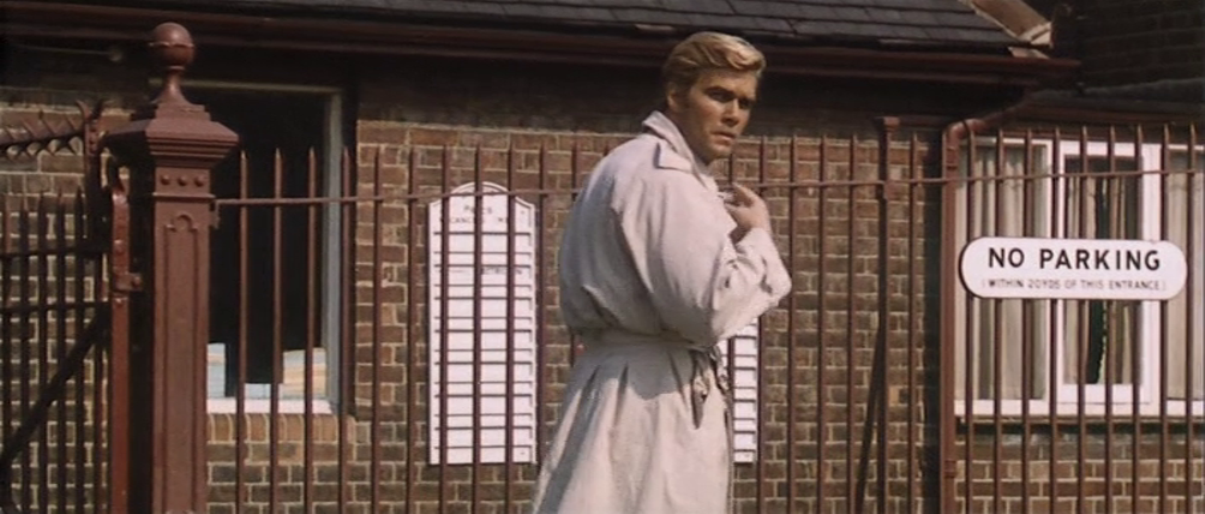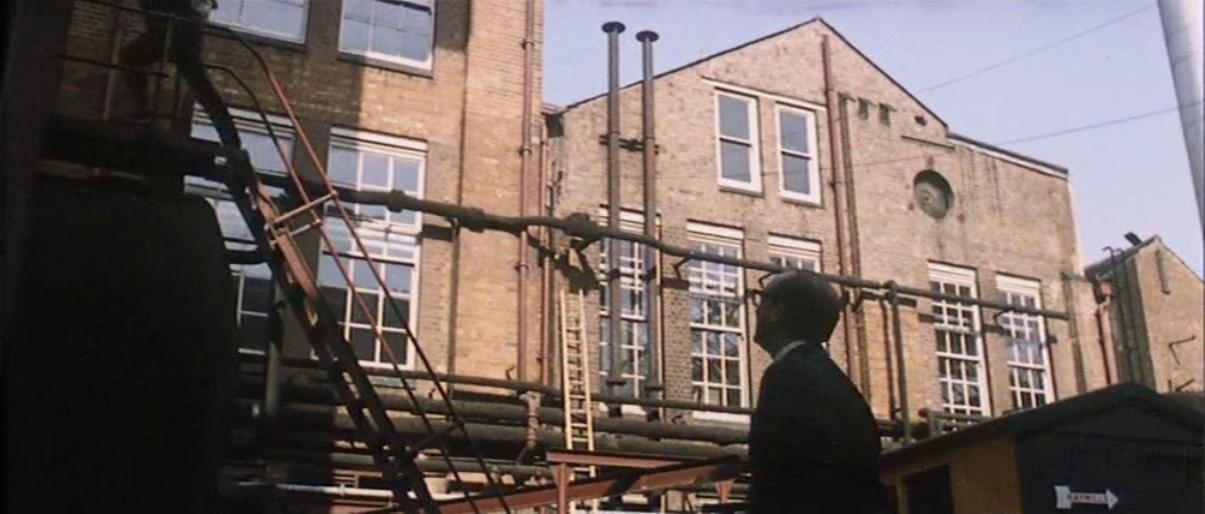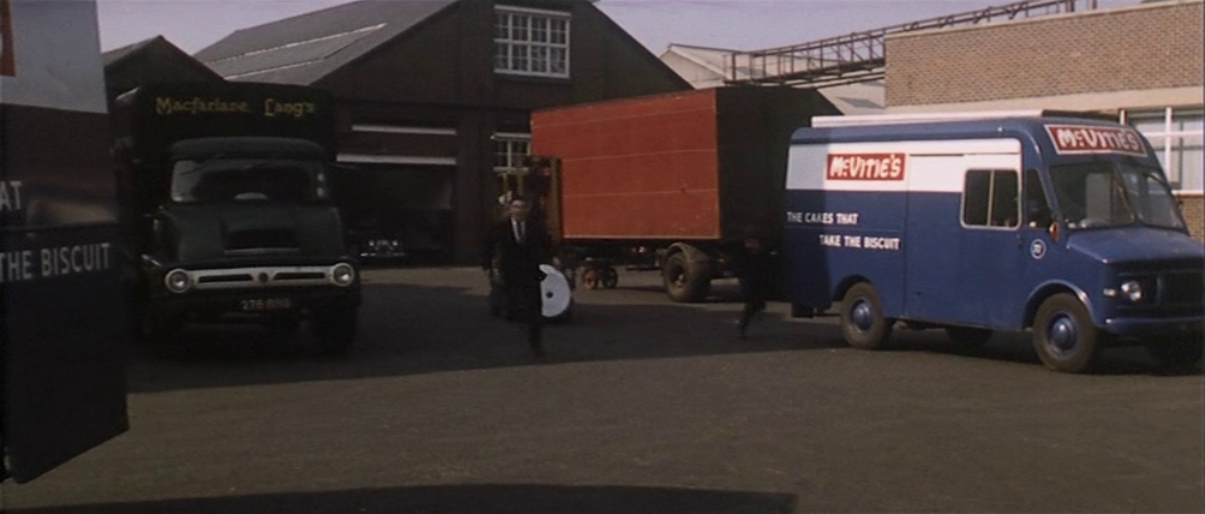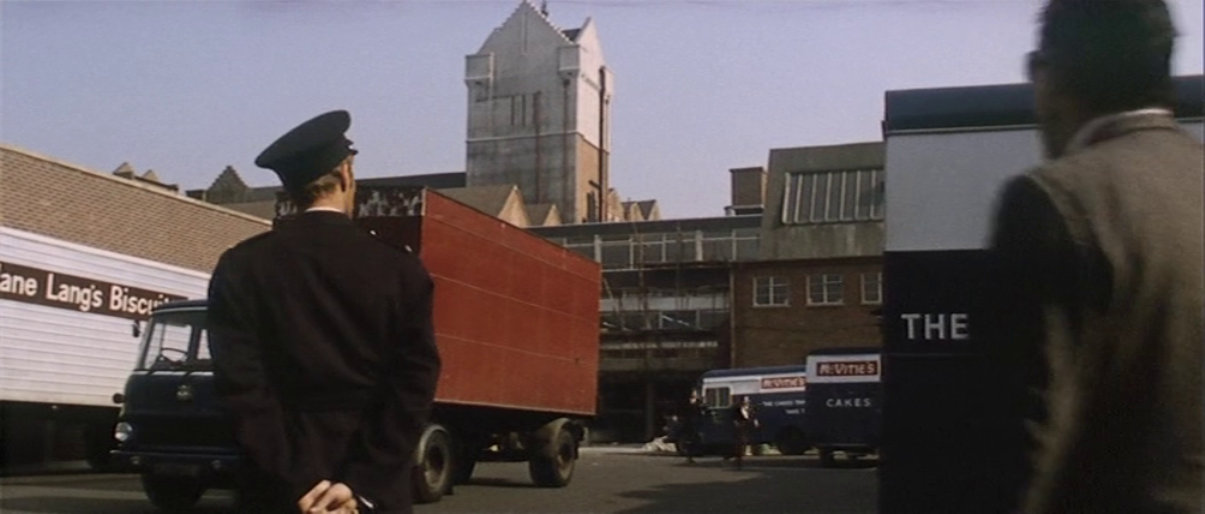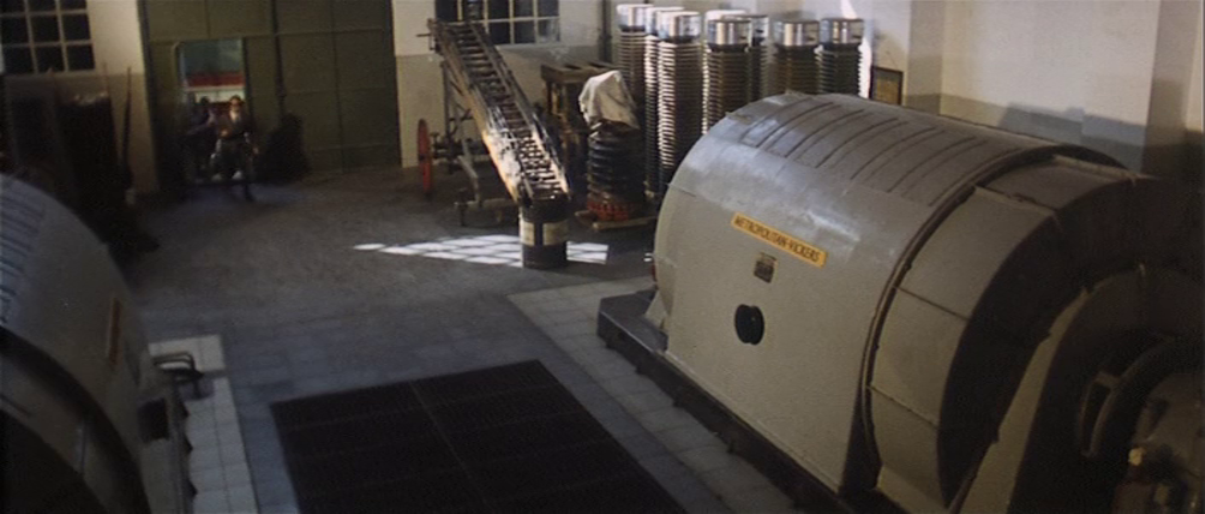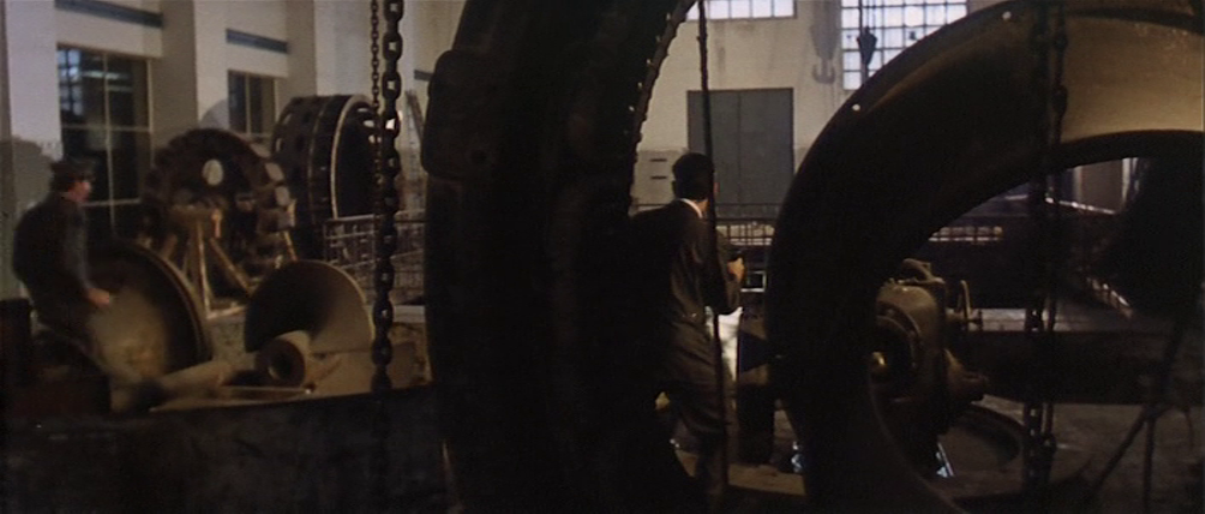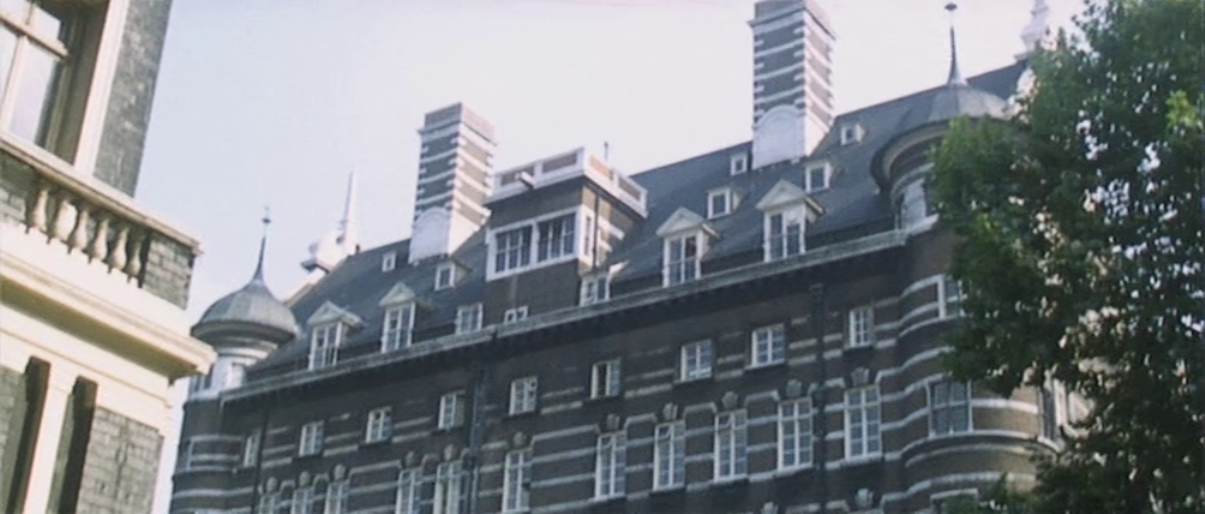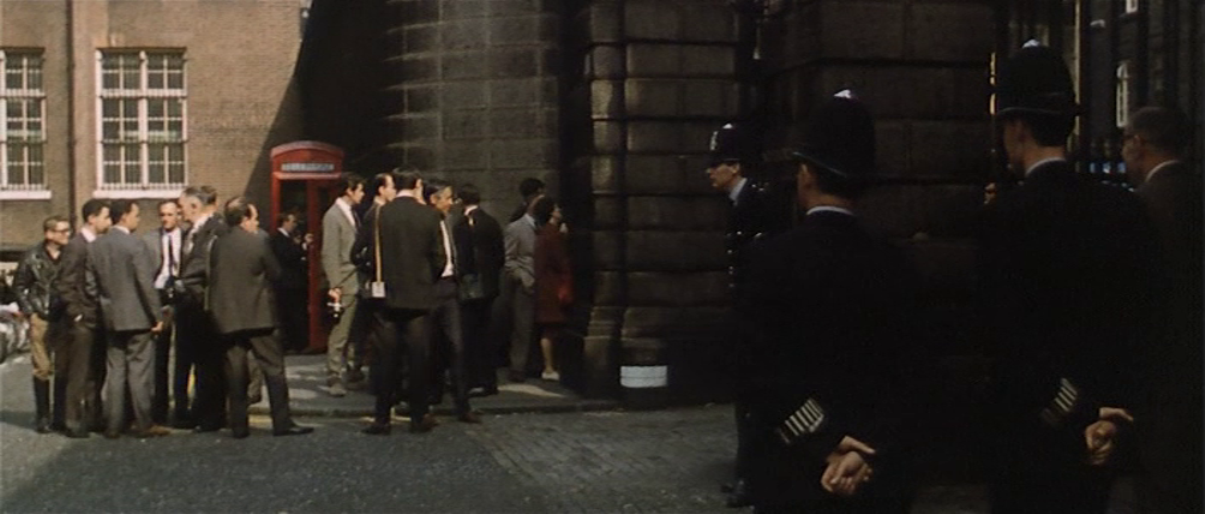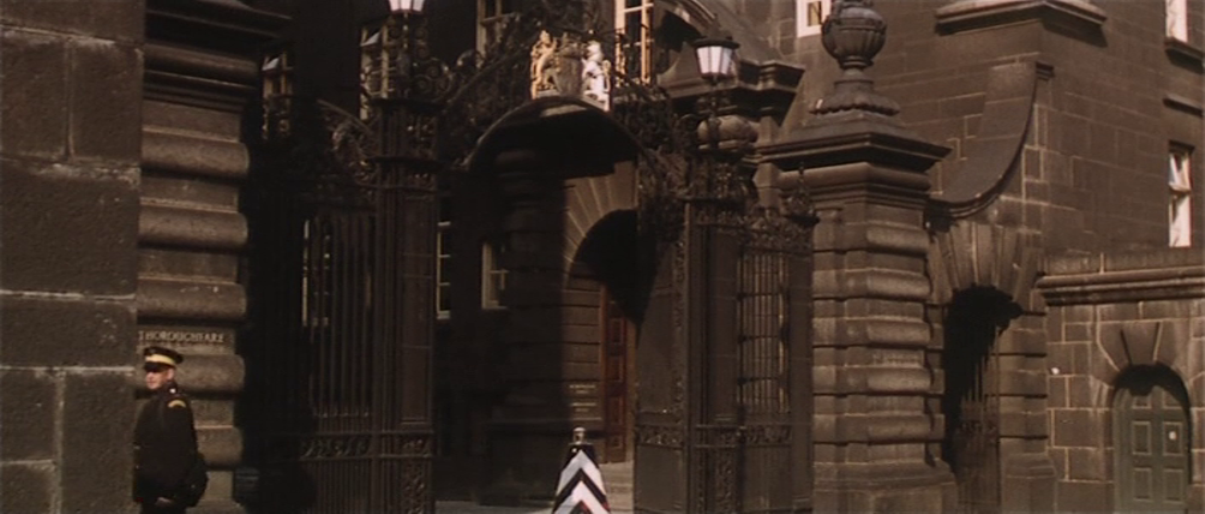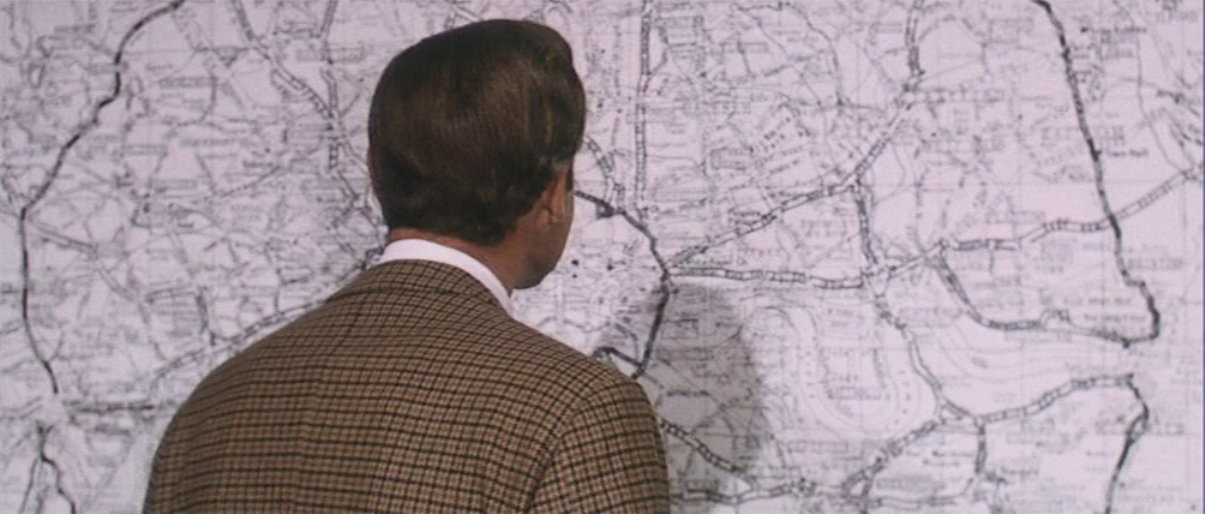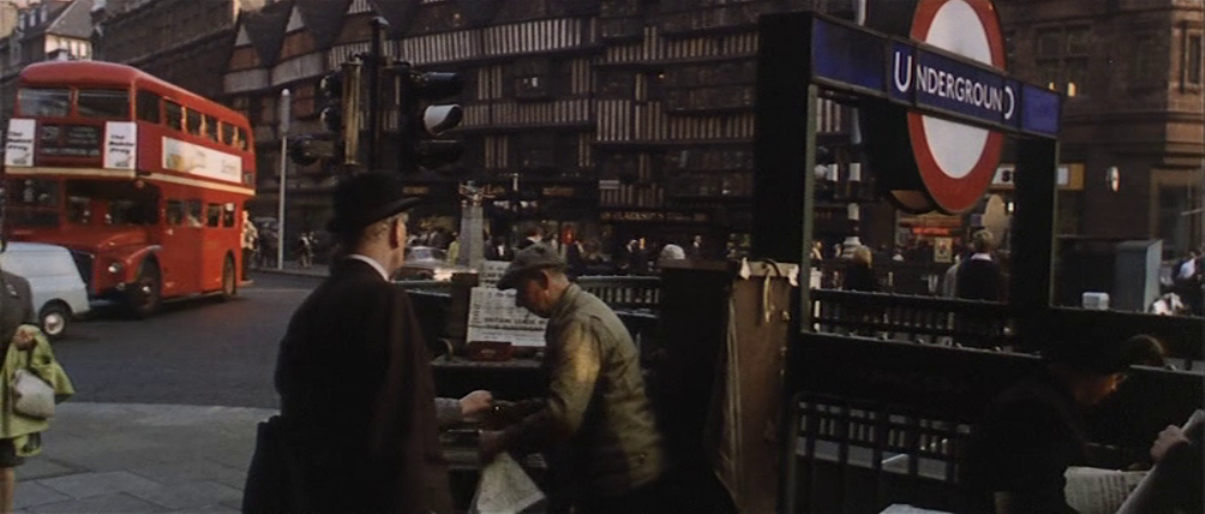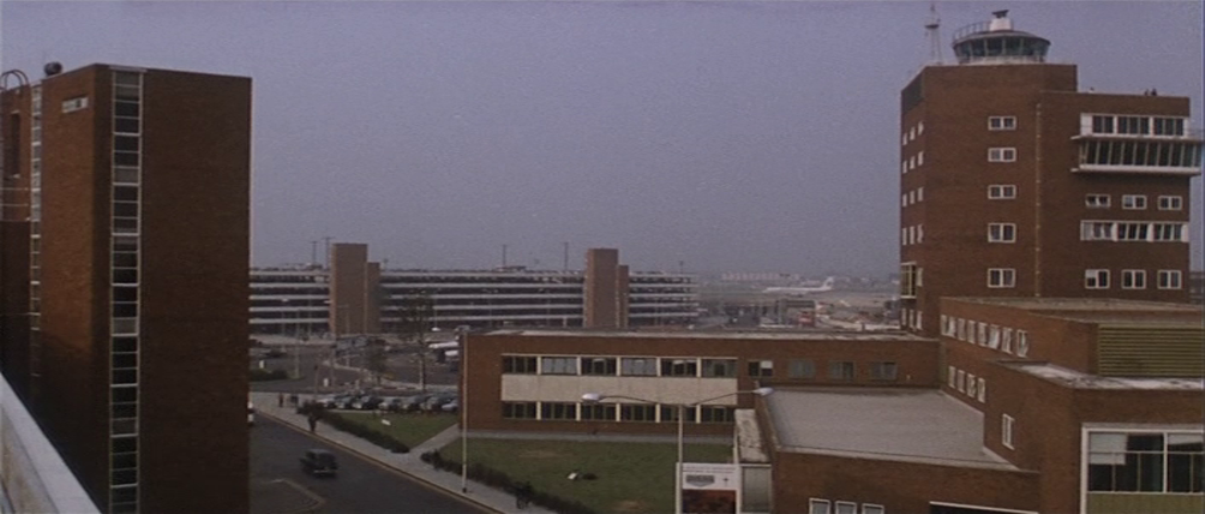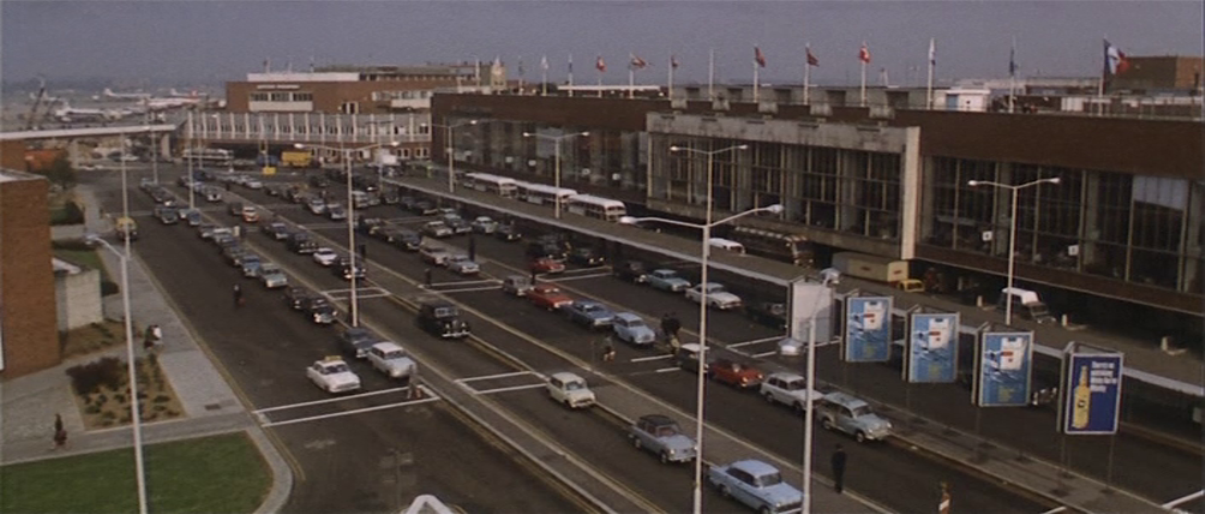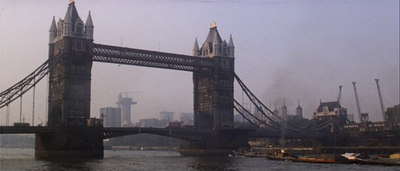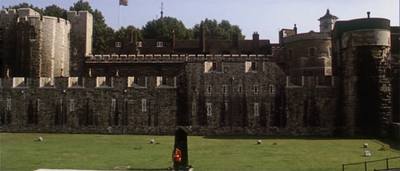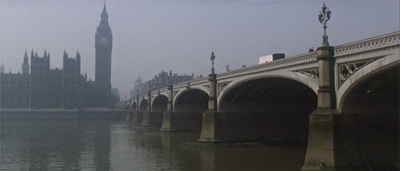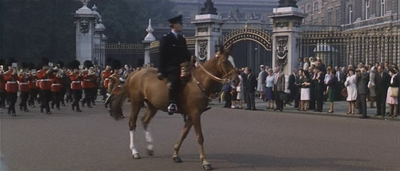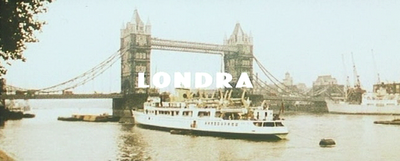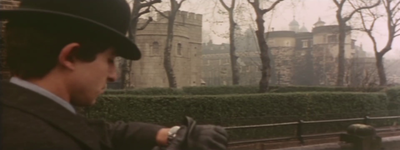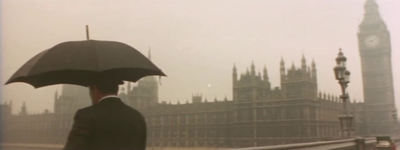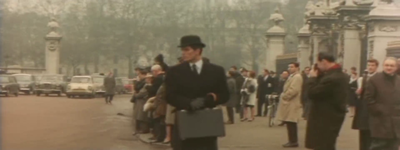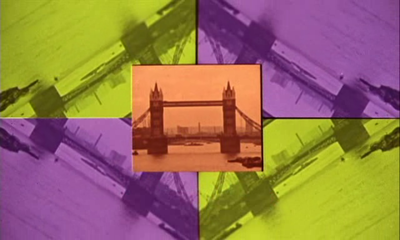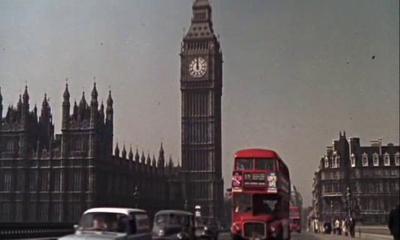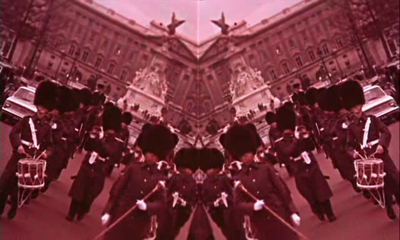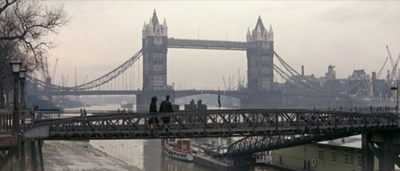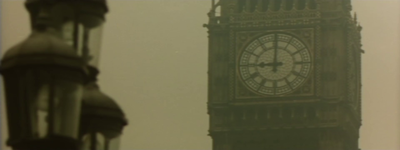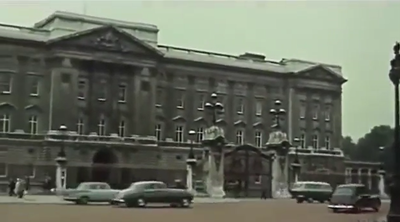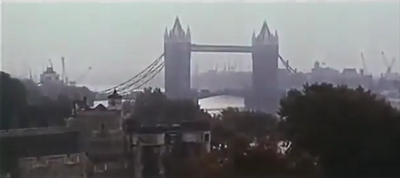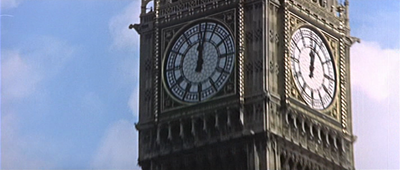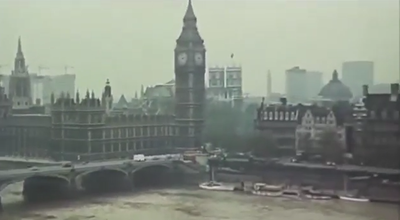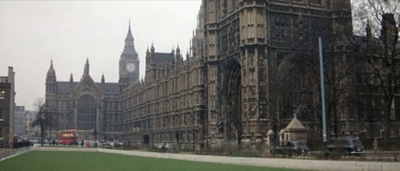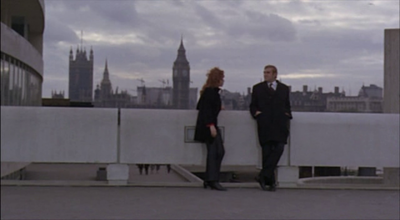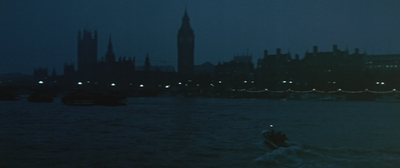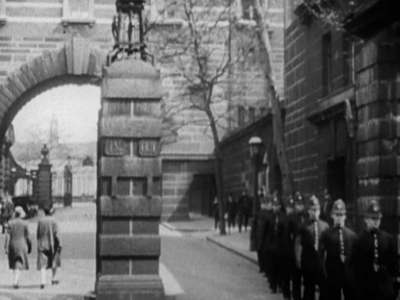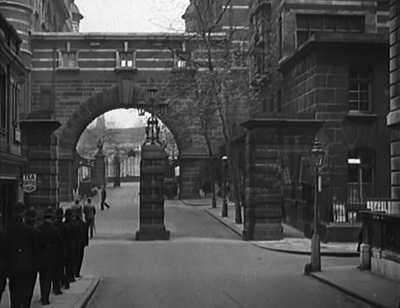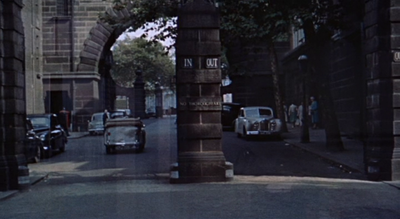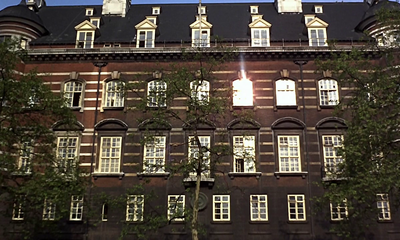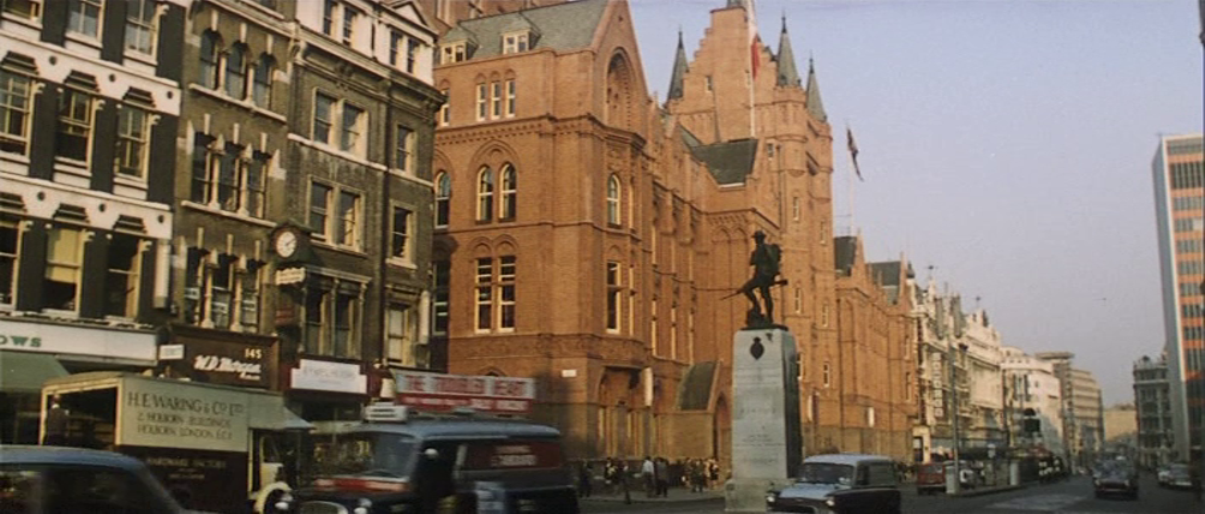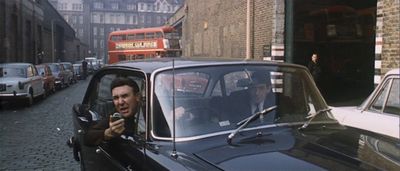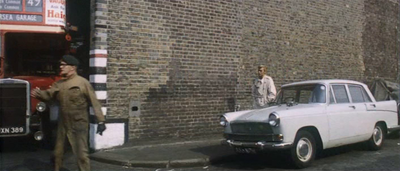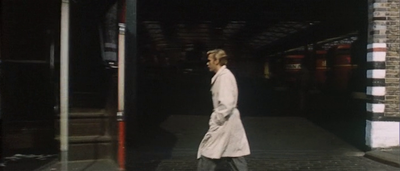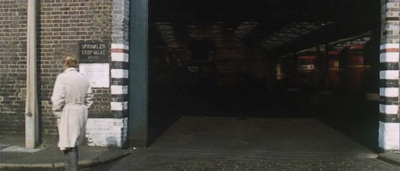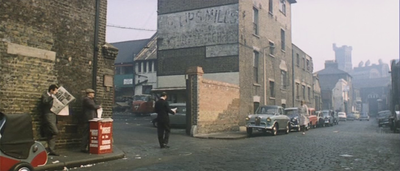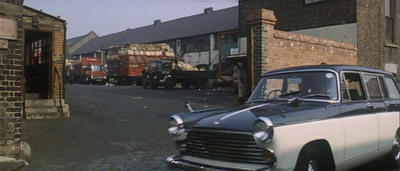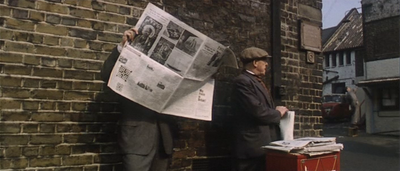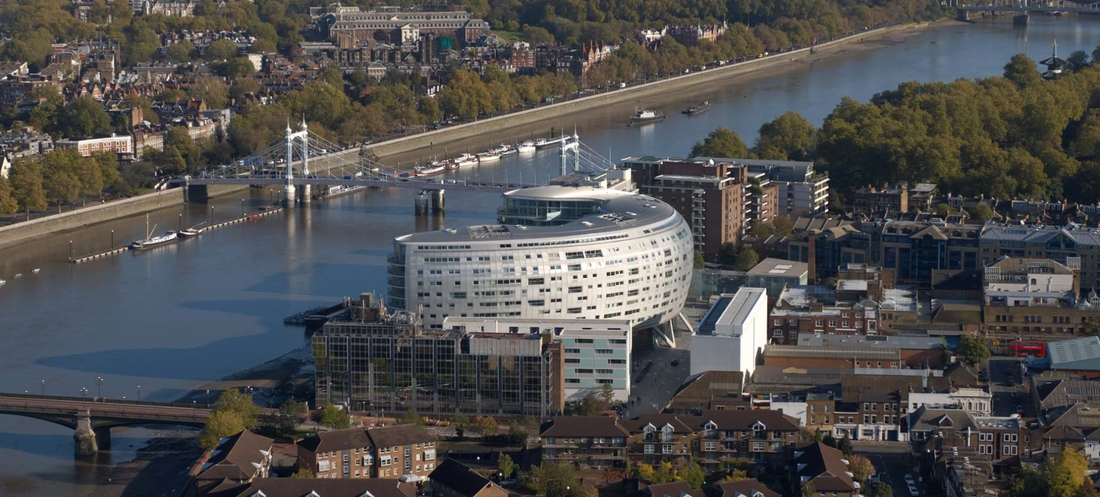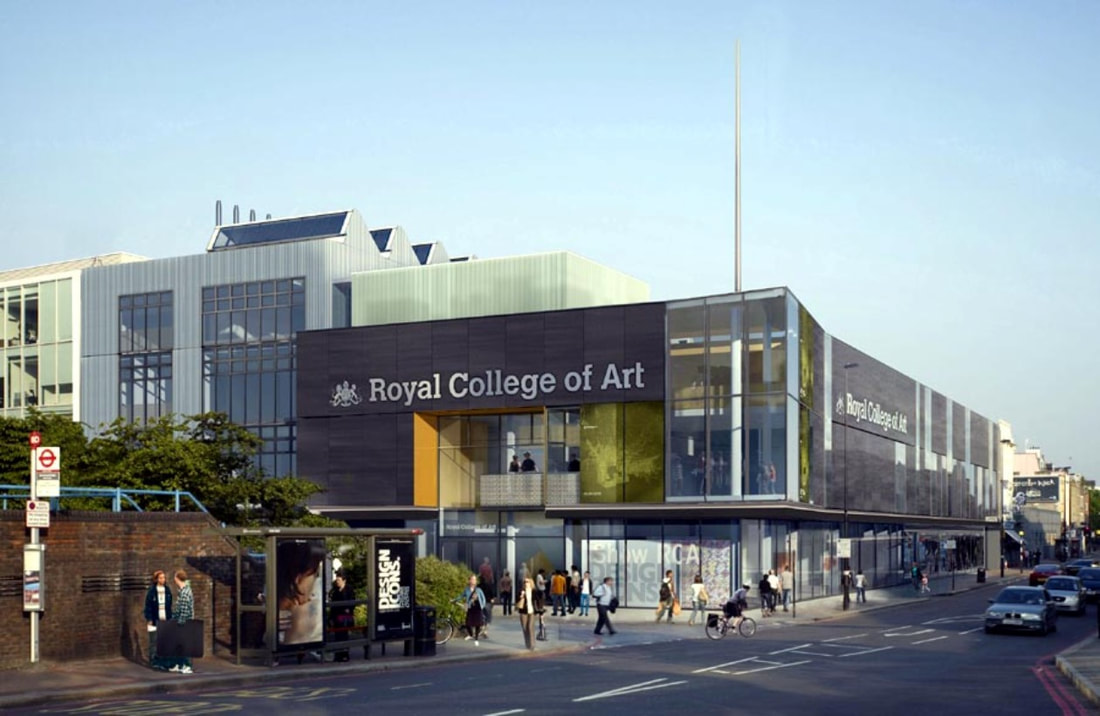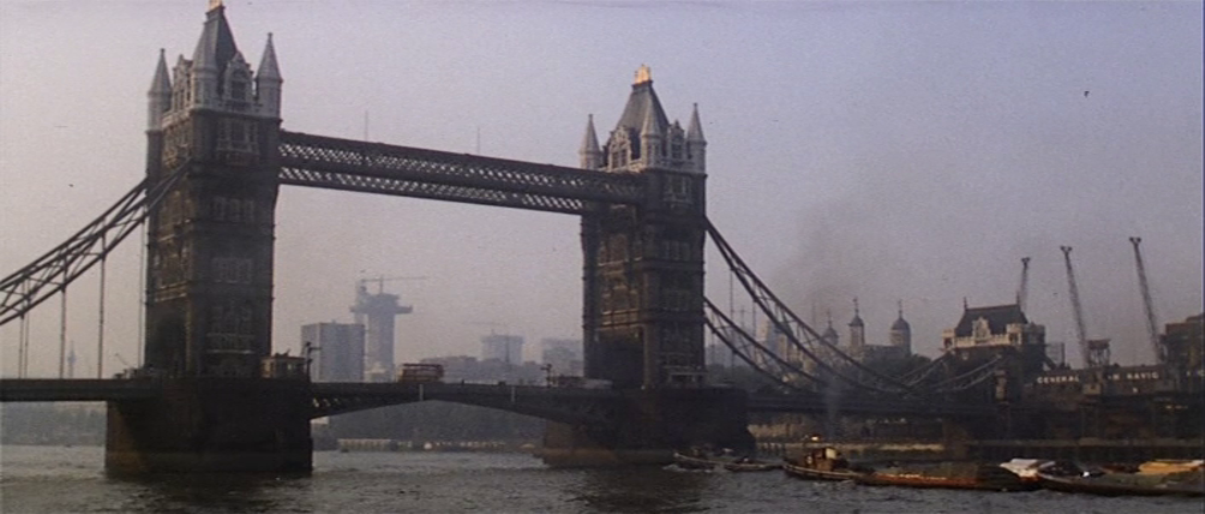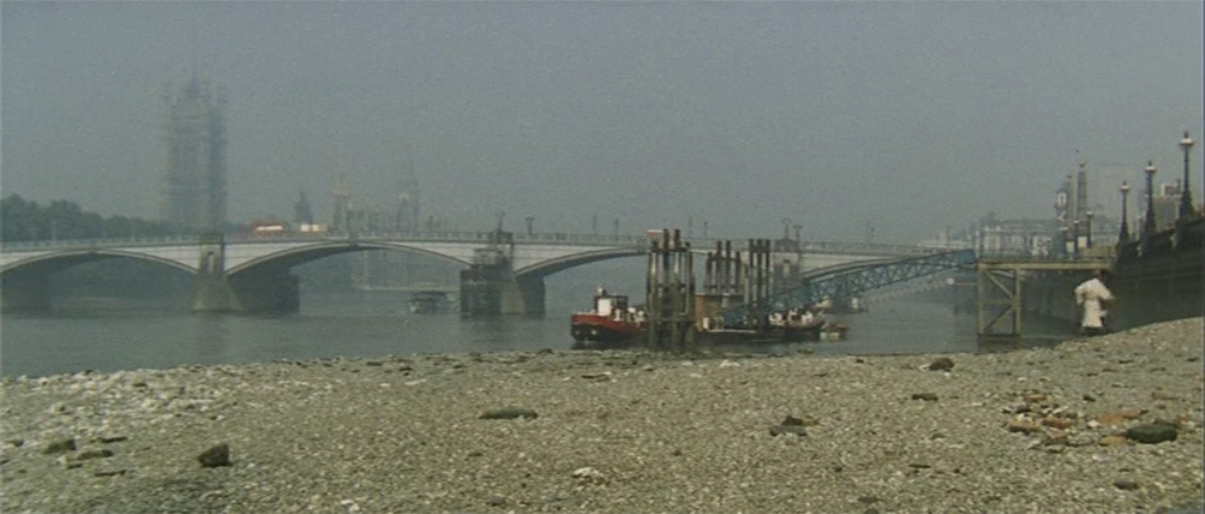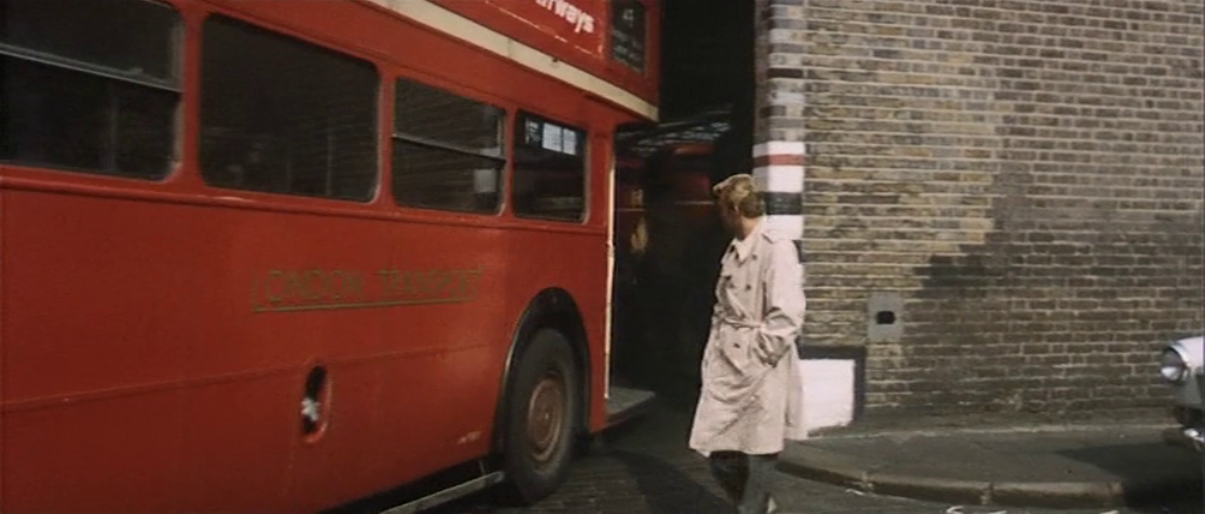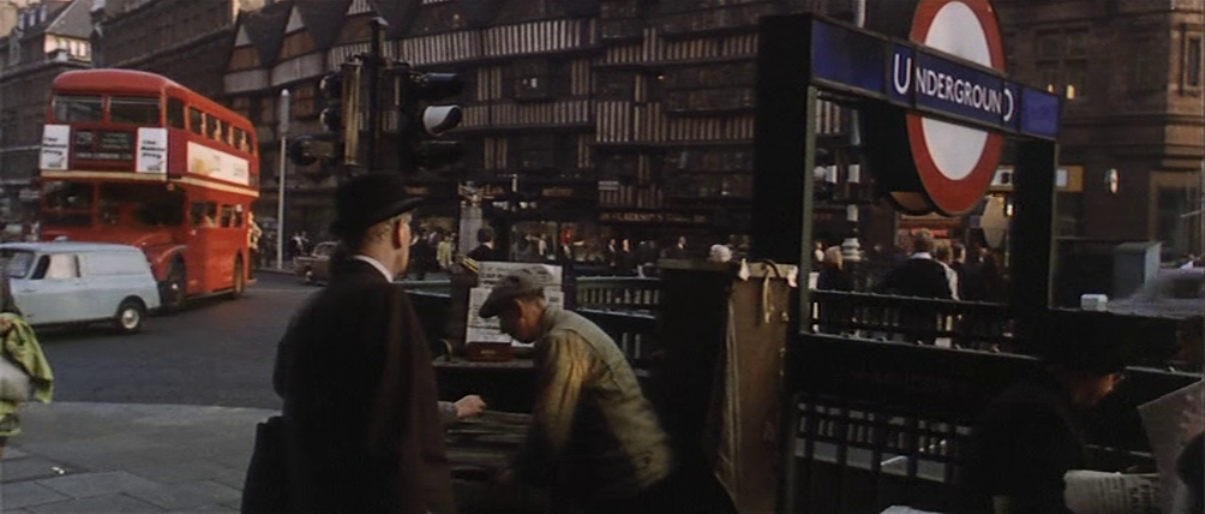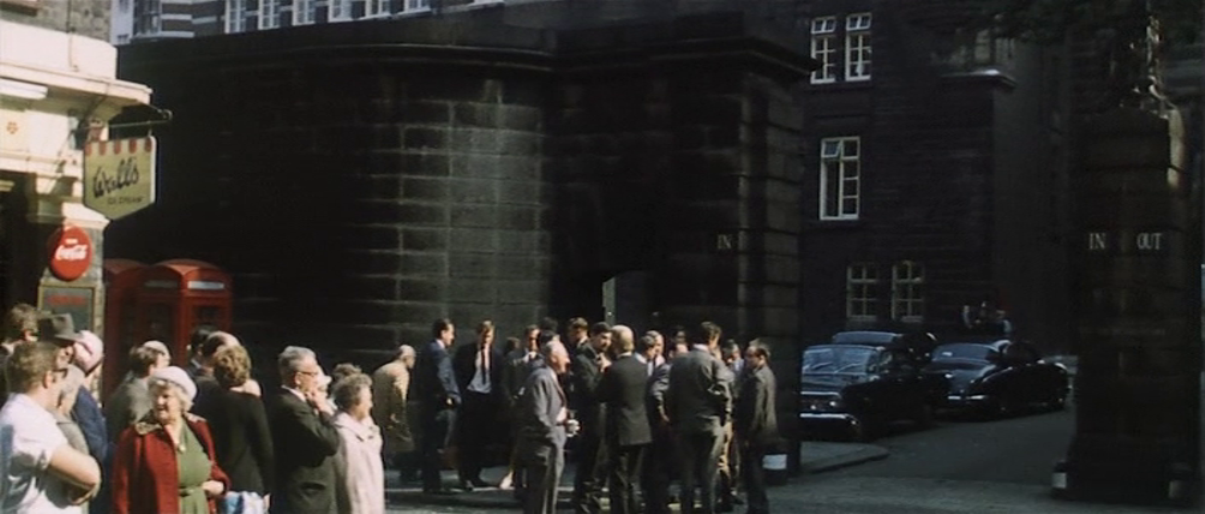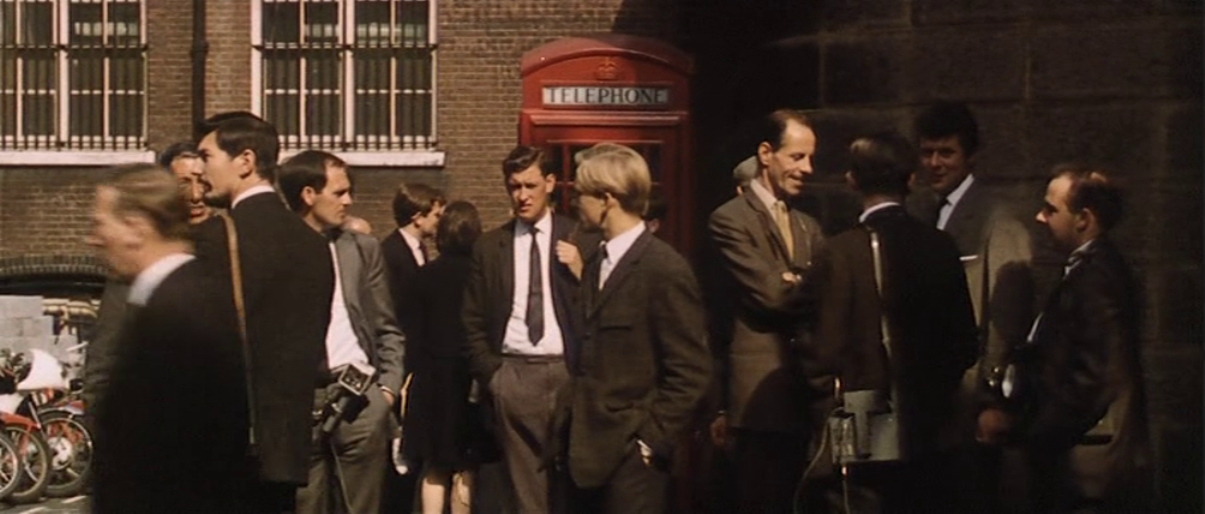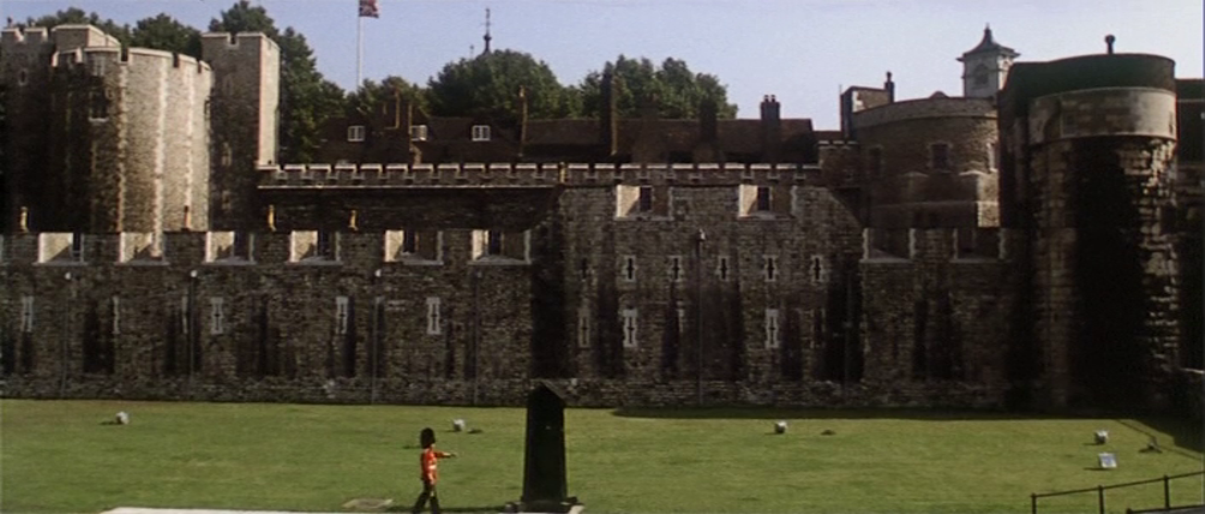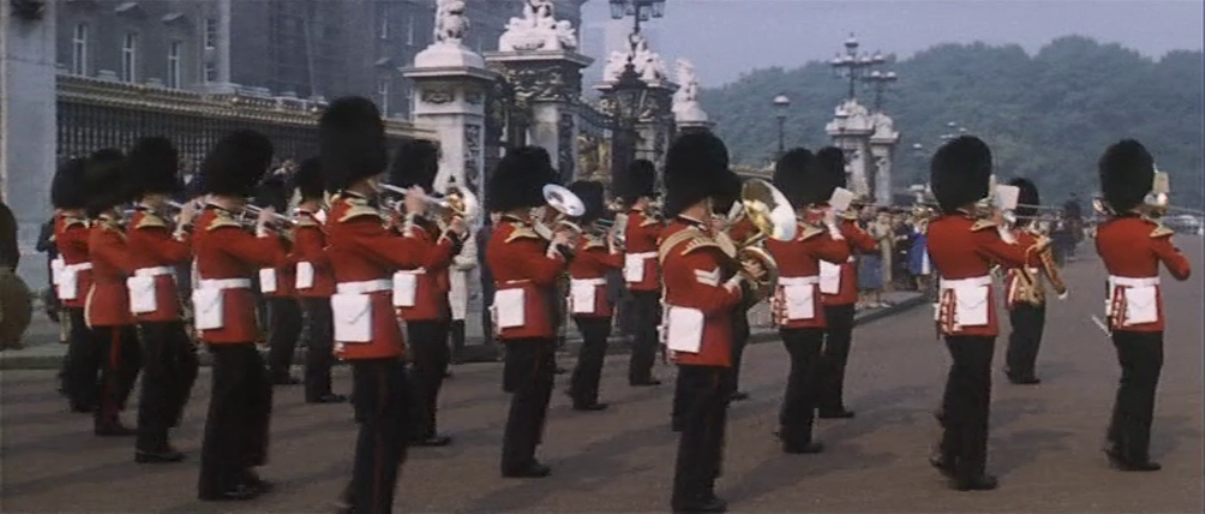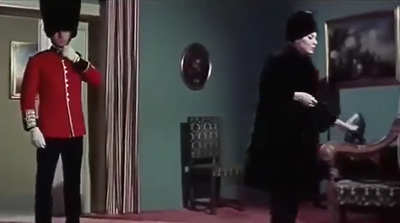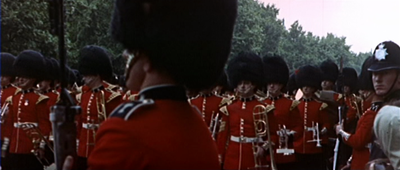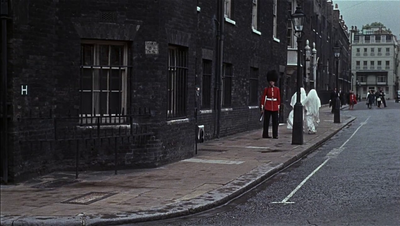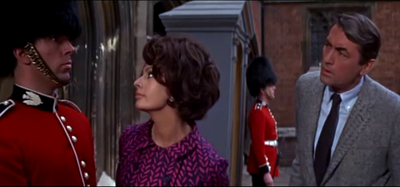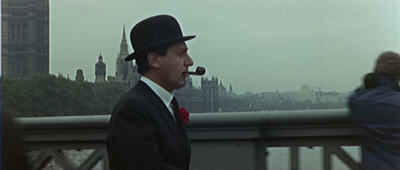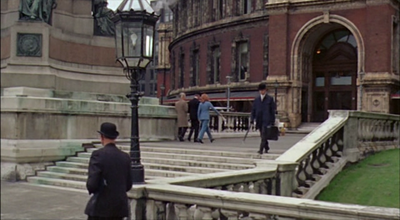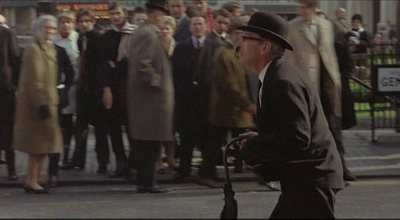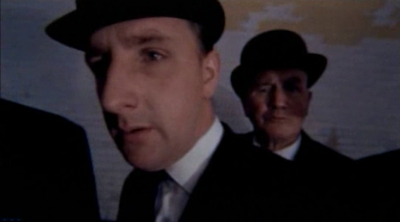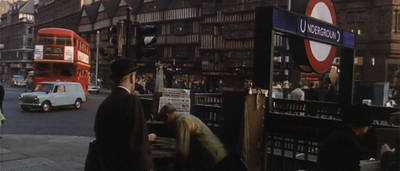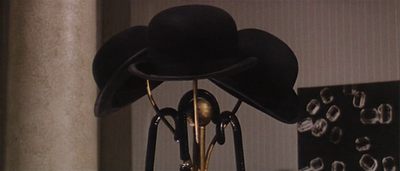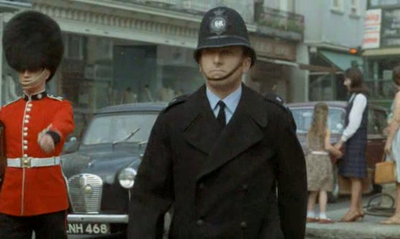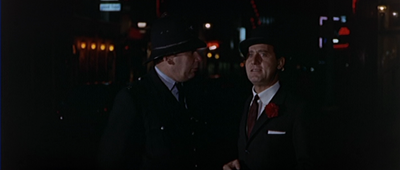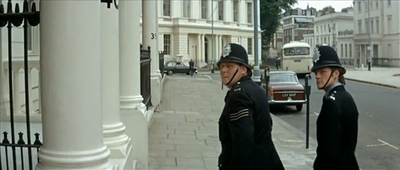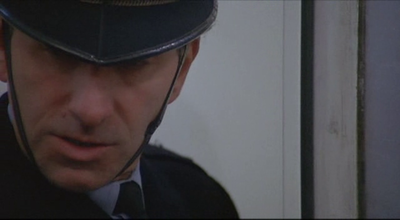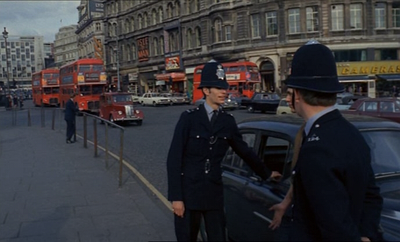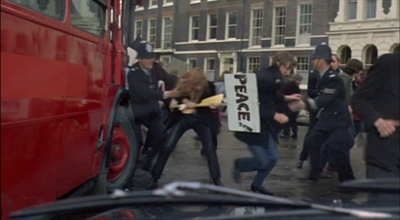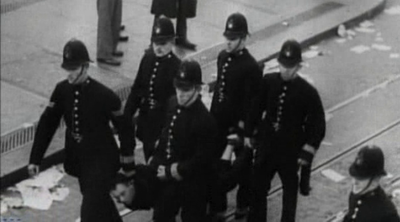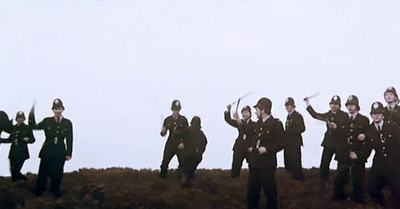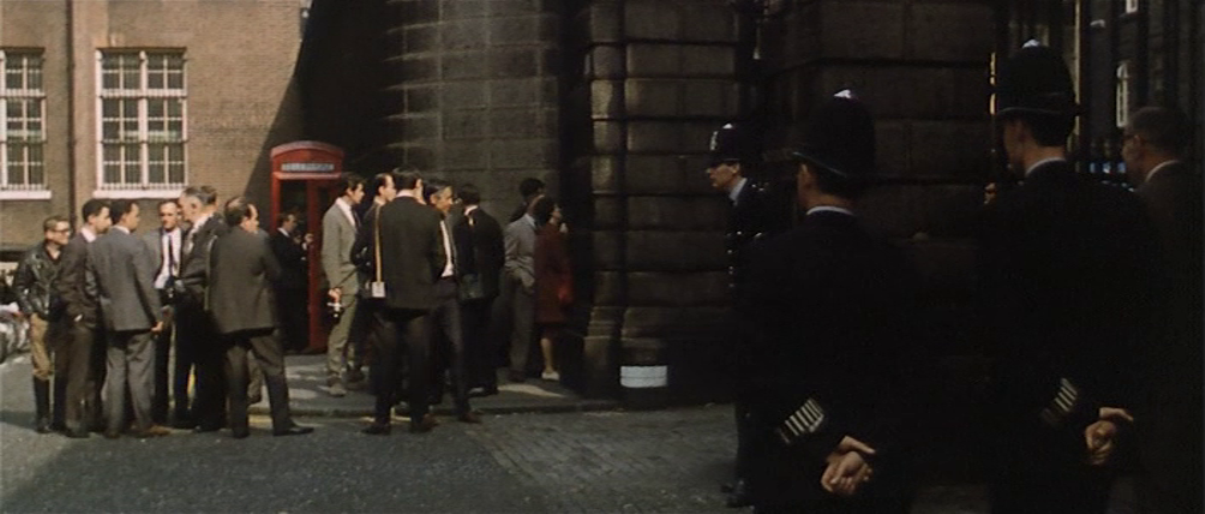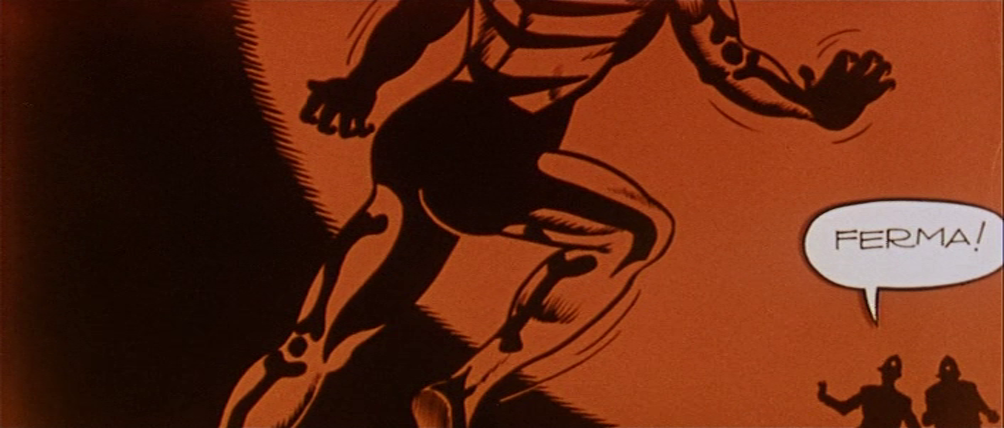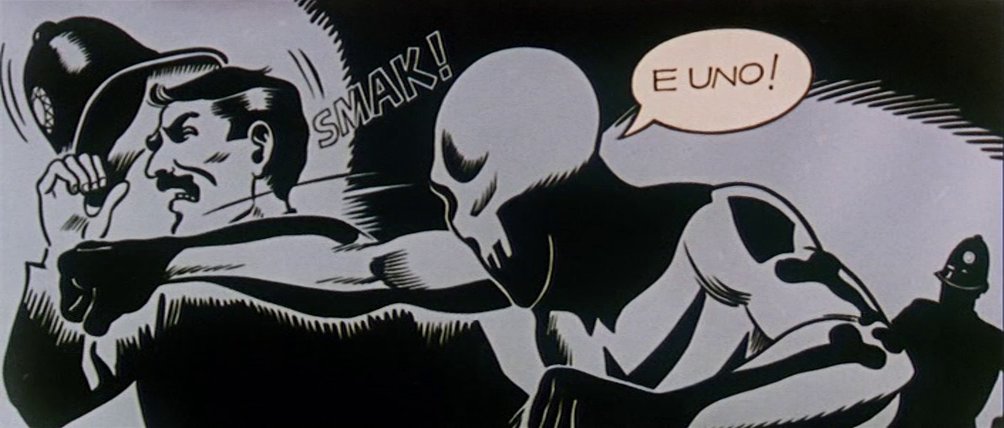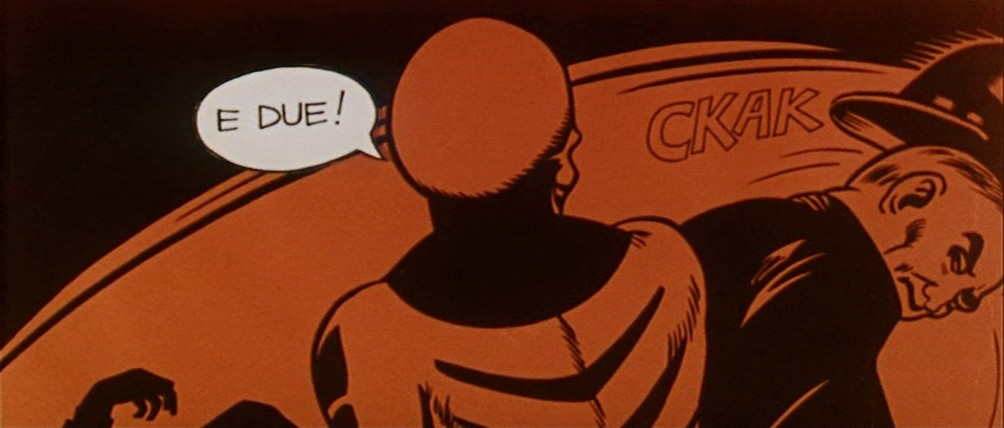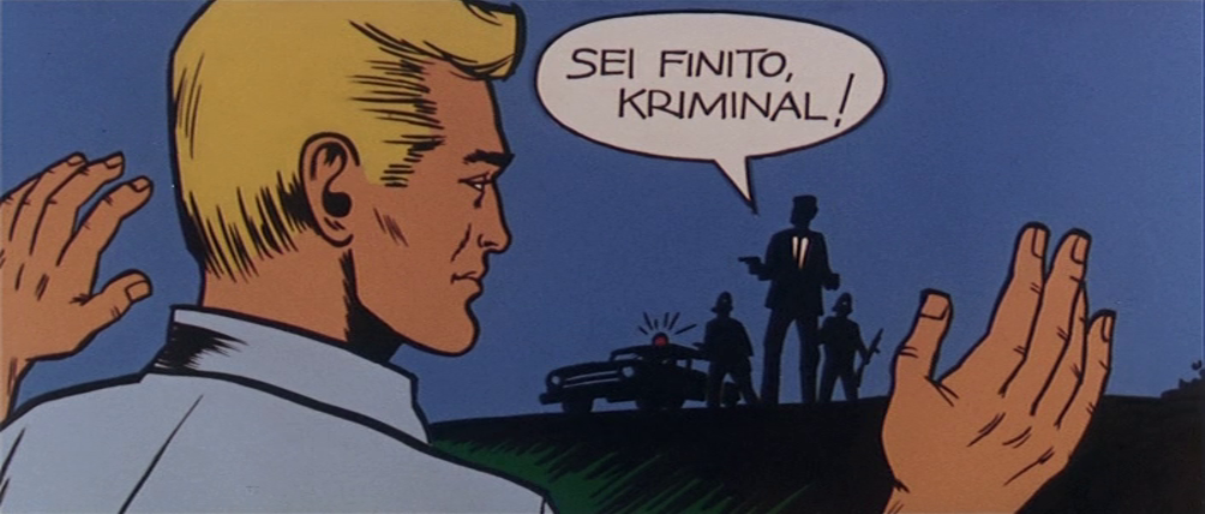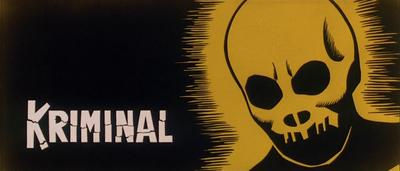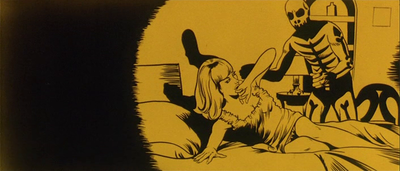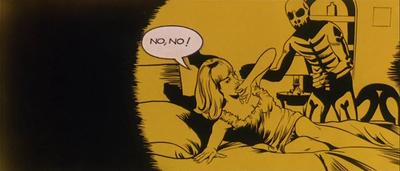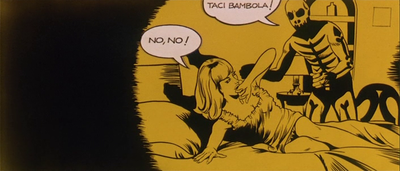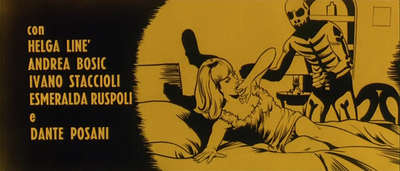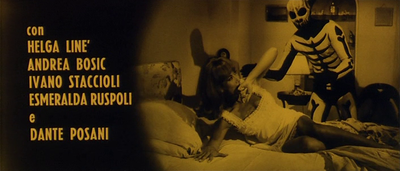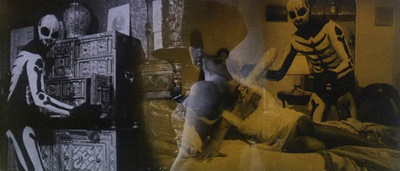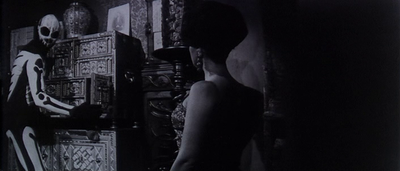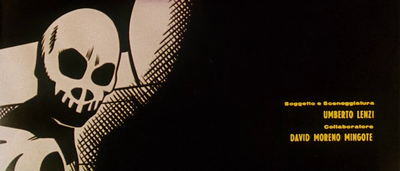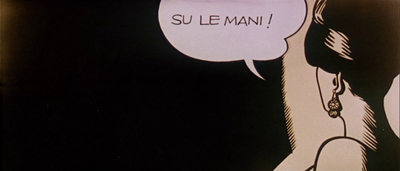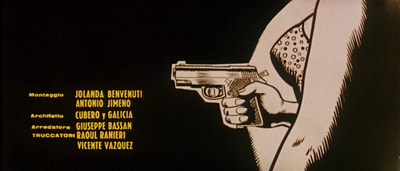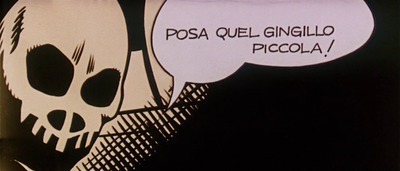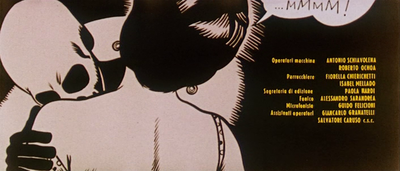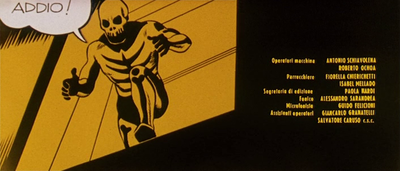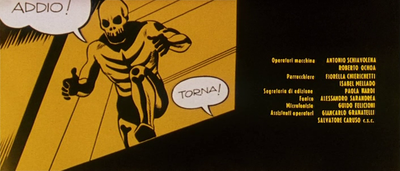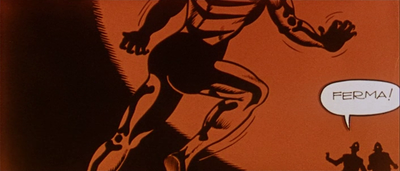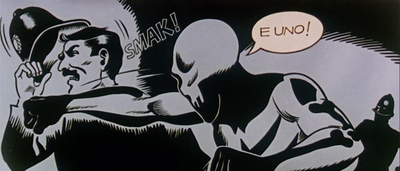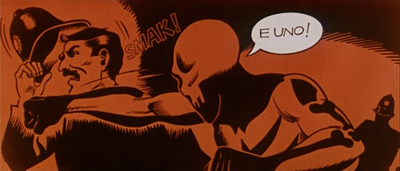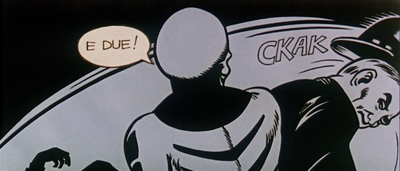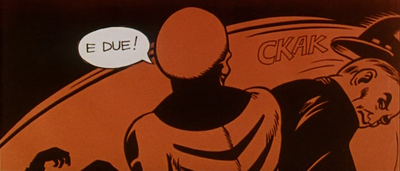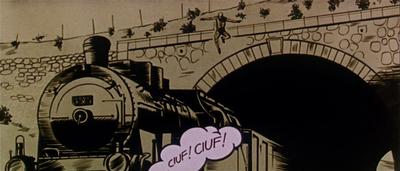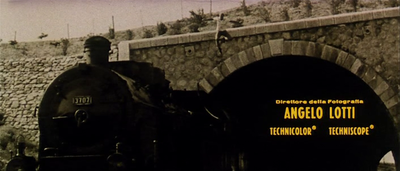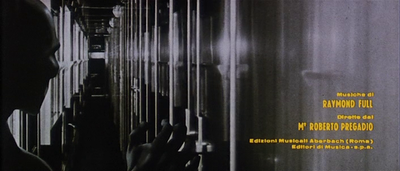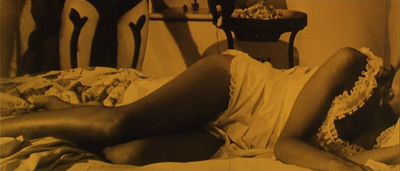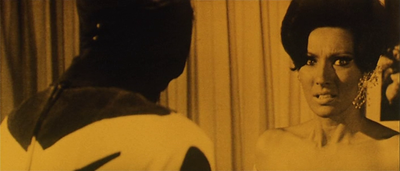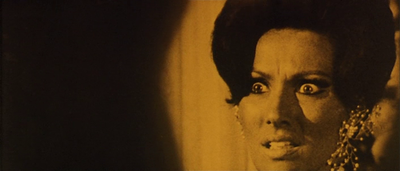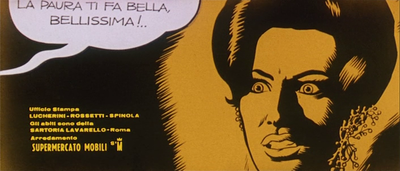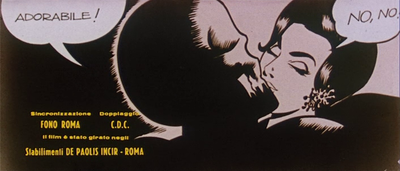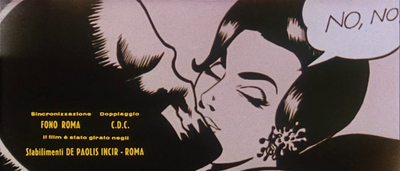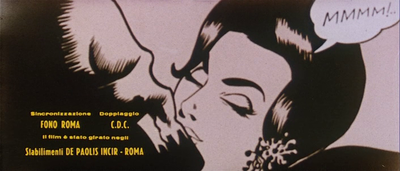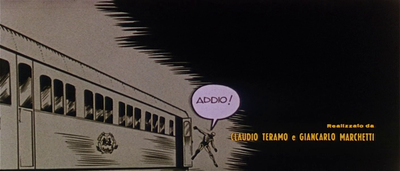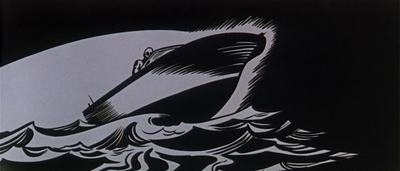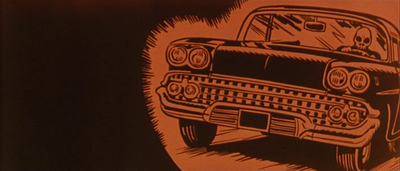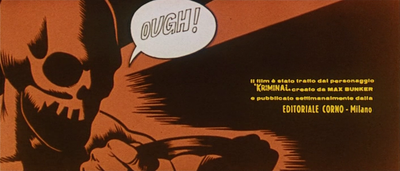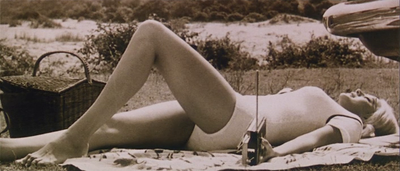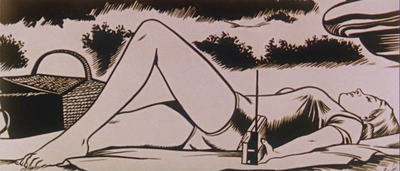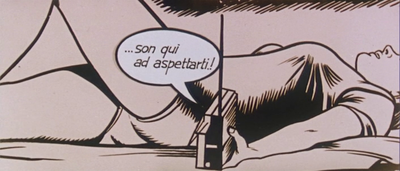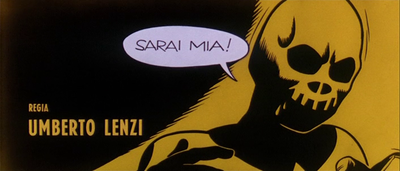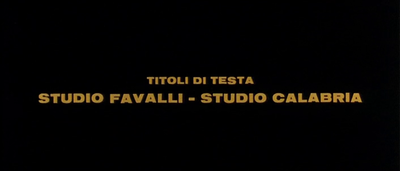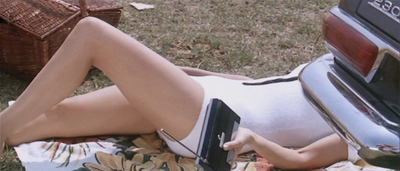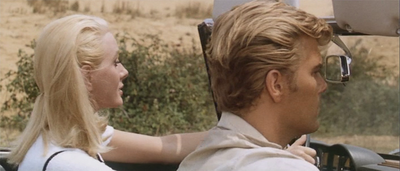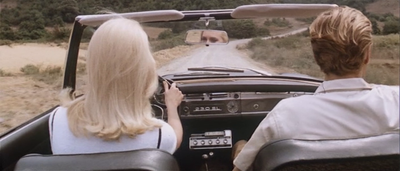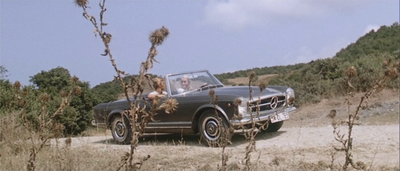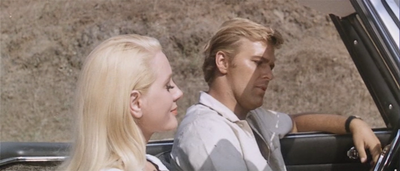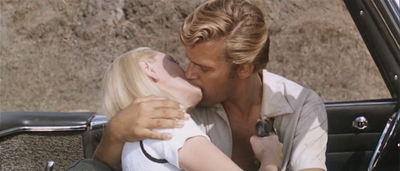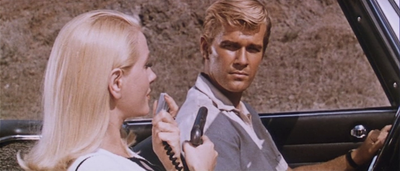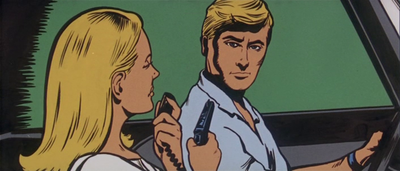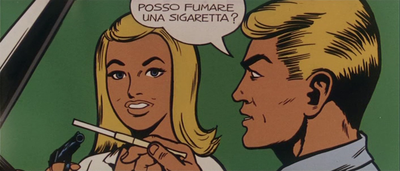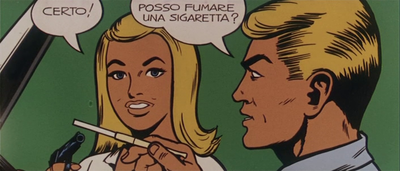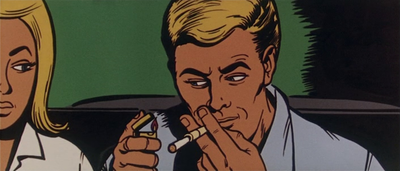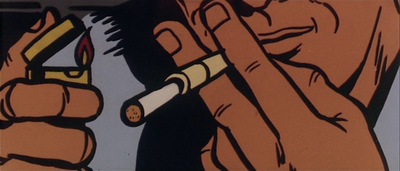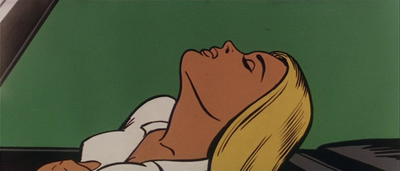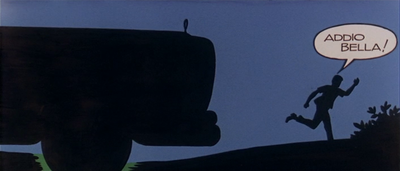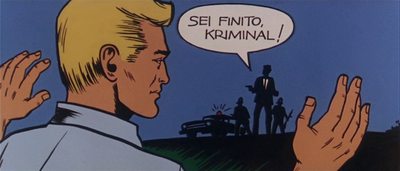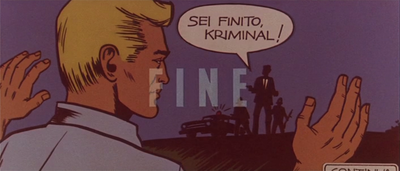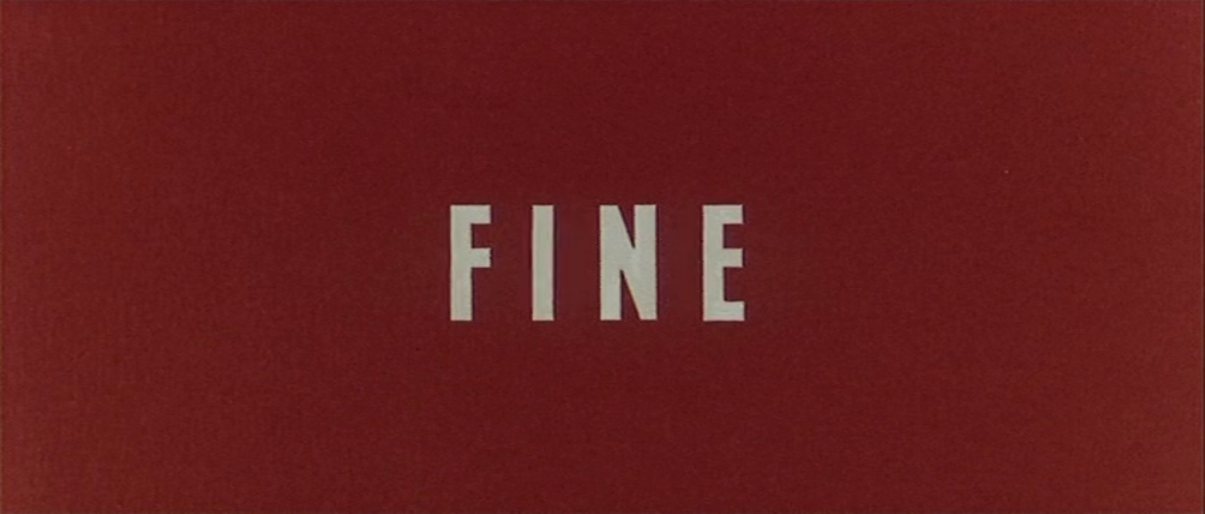Italians in London: Kriminal (1966)
The first fifteen minutes of Umberto Lenzi's Kriminal are set in London, with a further two-minute sequence later. The first we see of London is Tower Bridge and, to the left, the Tower of London, a standard establishing shot, looking north-west across the river. The building under construction in the distance is, I think, the Commercial Union building, now called St Helen's; in front of it is the now-demolished Bowring building.
There is topographical continuity from this shot to the next, a view of the west wall of the Tower of London:
There is topographical continuity from this shot to the next, a view of the west wall of the Tower of London:
The following sequence is inside the Tower, where Kriminal, 'the genius of evil', is to be hanged. He has stolen the British crown but it has not been recovered, so Inspector Milton has arranged for Kriminal to escape, hoping that he will lead the police to the crown. The plan is that Kriminal will reach the Thames via a series of unguarded tunnels, and indeed he is next seen emerging from a tunnel onto the beach below the Albert Embankment, opposite Millbank Tower. From here he heads towards Lambeth Bridge:
The implication is that the tunnels are about two and a half miles long and pass under the river, which is unfeasible but is not the biggest topographical unfeasibility in the film. That comes next, when Kriminal is observed by policemen as he climbs up onto the bridge and they report that he is now heading towards Buckingham Palace. The policemen are in a car parked at a place from where they have a full view of the embankment and bridge:
As you can see, their vantage point is in a street of 1930s' semi-detached suburban houses; the nearest house of that type to the Albert Embankment would be at least four miles away. I don't expect to discover where this particular suburb is, but if you recognise it do let me know.
Kriminal is next seen in front of Buckingham Palace:
Policemen in a different car then observe him 'proceeding from the docks towards the West End':
Here they are two miles from Buckingham Palace, next to Battersea Bus Garage on Hester Road S.W.11, with the now-demolished Battersea Bridge Buildings in the background. Kriminal is walking towards the policemen, past Phillips, Mills & Co., waste paper merchants.
Though Kriminal should be arriving on Battersea Bridge Road, the building we see him approaching is six miles away, in Harlesden:
This is the United Biscuit factory on Waxlow Road N.W.10:
I have no means of knowing whether the interior we see is that of the biscuit factory, but it is a real factory interior:
The following scene is at Scotland Yard, where it is revealed that Kriminal has escaped his pursuers and Inspector Milton's plan has failed:
This is the actual exterior of the old Scotland Yard building (architect Norman Shaw 1887-1906). Different views of it are shown when the film returns briefly to London later in the film:
The first scene in the Inspector's office begins with him studying a map of London:
He appears to be looking intently at Kingsland Road E.8. This is not an area that otherwise features in the film.
The next London exterior in the film is two views of Holborn. The first shows the Prudential Assurance building, with a glimpse of the now-gone Daily Mirror building opposite, and to the fore the Royal Fusiliers War Memorial:
The next London exterior in the film is two views of Holborn. The first shows the Prudential Assurance building, with a glimpse of the now-gone Daily Mirror building opposite, and to the fore the Royal Fusiliers War Memorial:
The second view is of the half-timbered Elizabethan houses above the entrance to Staple Inn, with in the foreground an entrance to Chancery Lane tube station:
The London section closes with a set of views at Heathrow Airport:
This film's visit to London takes in four predictable landmarks: Tower Bridge, the Tower of London, The Houses of Parliament and Buckingham Palace, standard views for this kind of cine-tourism at this time:
Here are some of the same sites in other visitor films circa 1966:
The views of the Norman Shaw buildings at Scotland Yard are also standard, familiar from many London-set crime films:
Instantly recognisable but less familiar from films are the views of buildings on Holborn:
Unseen elsewhere on screen - as far as I can tell - are the views near the bus garage in Battersea and of the biscuit factory in Harlesden. Since all of the buildings seen in these shots are now demolished, Kriminal becomes, unwittingly and just for a minute, a document of lost London. The record of Hester Road, in particular, is precious, given how dramatic has been the redevelopment:
Norman Foster's Albion Riverside apartment complex has replaced the bus garage, and at the end of the street is the Haworth Tompkins building for the Royal College of Art:
The London-ness of Kriminal is established, obviously, by the use of London locations, especially landmarks, and is supplemented by views of people and objects typically associated with London. Filming near a bus garage leads, again obviously, to views of red buses, but these also appear in street views elsewhere. Their redness as they pass on bridges may be missed, but in closer views it combines with the redness of telephone kiosks and the uniforms of guardsmen to accentuate the city's characteristic colouring:
Guardsmen in red are irresistible to Italian cine-tourists in the sixties:
As are suited men in bowler hats:
Kriminal features bowler hats, firstly on the head of an unwitting passer-by, then in a staged scene:
More common than busbies and bowler hats in tourist films are the helmets worn by London policemen:
In Kriminal we only once see real policemen in their traditional helmets:
But comic-book policemen do feature in the credit sequences:
Kriminal is based on the comic-book character created by Max Bunker and Magnus, and the credits play with the photographic adaptation of drawn images:
